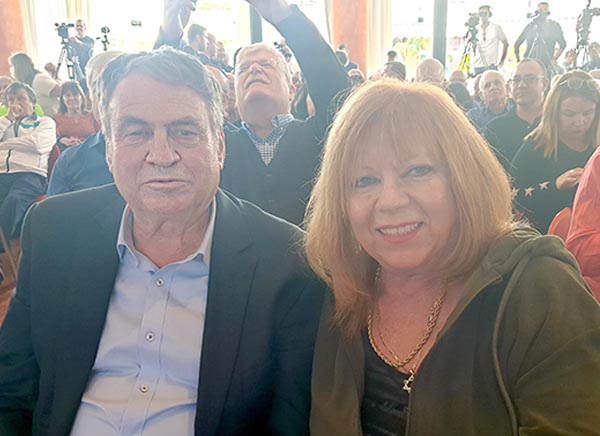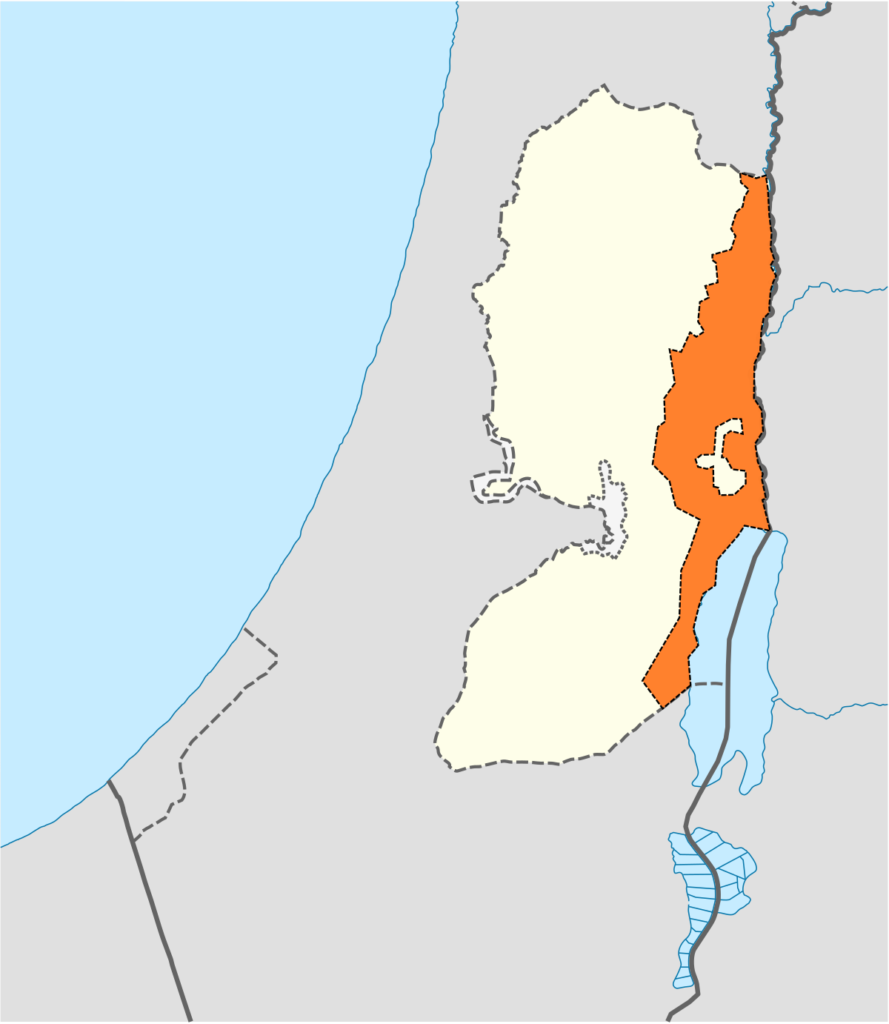
The Jordan Valley is a long and narrow valley along the Jordan River. It forms a natural eastern border between Israel and Jordan. Israel considers it to be an important strategic region to protect the country’s eastern region.
Last Wednesday, I (Bella) joined about 300 women from the Likud Party on a trip to the Jordan Valley with Uzi Dayan, our tour guide. Maj. Gen. (reserve) Uzi Dayan was the former head of the IDF Central Command, IDF Deputy Chief of Staff and national security adviser to several Prime Ministers.
Our first stop was a place the Arabs call Qasr el-Yahud (“Castle of the Jews”). Jews believe this was the place at the Jordan River where the Israelites, led by Joshua son of Nun, crossed the river to enter the Promised Land following the Exodus from Egypt. They also believe it is the place the Prophet Elijah crossed the river in the opposite direction and was taken into heaven by ‘fiery chariots’, as witnessed by his disciple Elisha.
“It’s a very special place,” Maj. Gen. Uzi Dayan told us. “Maybe the most important historical event of Israel took place here.” Joshua 1:
“The Lord said to Joshua son of Nun: 2 “Moses my servant is dead. Now then, you and all these people, get ready to cross the Jordan River into the land I am about to give to them—to the Israelites. 3 I will give you every place where you set your foot, as I promised Moses. 4 Your territory will extend from the desert to Lebanon, and from the great river, the Euphrates—all the Hittite country—to the Mediterranean Sea in the west. 5 No one will be able to stand against you all the days of your life. As I was with Moses, so I will be with you; I will never leave you nor forsake you. 6 Be strong and courageous, because you will lead these people to inherit the land I swore to their ancestors to give them.“
Dayan also believes this is the place Moses looked on from nearby Mount Nebo when he ended his role as leader of Israel and saw the people of Israel get ready to enter the Promised Land. Moses himself didn’t enter and died on the mountain on the other side of the Jordan River.
For Christians, this place is also significant as they believe that this was the spot in the Jordan River where John the Baptist baptized Yeshua (Jesus). Today it is a baptismal site. Until 2011, this baptismal site was a closed military zone, accessible only to groups with special permission after prior coordination with the IDF-Israel Defense Forces. Today, this area has a few churches belonging to different denominations, mainly Greek Orthodox, open to visitors who come to be baptized.
As we drove across the valley to a place commemorating Israeli soldiers who were killed in a battle protecting the valley, Dayan said that Israeli annexation of the Jordan valley is a ‘security buffer zone that is essential to Israel’. “Israeli security requires three things: fundamental strategic depth; room to wage war against the threat of conventional attacks from the outside, and room that allows for effective combat against terrorism. The minimal strategic depth and air space required is the 65 kilometers average width of Israel from the Mediterranean Sea to the Jordan River. As for room to wage war, this is the Jordan Rift Valley which ranges between 6 and 14 km wide.”
As he spoke, the General pointed out the mountains on the valley’s western edge (which range from 900 to 1,400 meters edge high) that create a physical defensive barrier. There are only five mountain passageways through them. Even a limited IDF force deployed in the valley can defend Israel against an attack from the east.
The Jordan Valley is the eastern buffer zone that prevents the West Bank mountain region from becoming a terrorist entity. From the time Israel captured the Jordan Valley from Jordan in the Six-Day War in 1967, there have been no military invasions from Jordan into Israel. There now exists a peace treaty between Israel and Jordan.
According to provisions of the 1993 Oslo Accords, most of the Jordan Valley is part of Area C, where Israel maintains full civil and security control. However, this strategic region is not yet officially Israeli territory.

While the peace deal between Israel and Jordan minimizes the threat of attack today, there are still many reasons why Israel needs to control the Jordan Valley. The biggest challenge to Israel’s claim over the Jordan Valley is that the Palestinians also claim the territory as part of what they call the ‘West Bank,’ the same area Israelis identify as historic Judea and Samaria. Prime Minister Benjamin Netanyahu has called for applying Israeli sovereignty over the Jordan Valley region and designates the valley a ‘defensive wall’ that, along with related territory, will ensure Israel’s safety with the permanent presence of the IDF.
As we visited the lower part of the Jordan Valley, General Dayan explained the strategic importance of the area. “From the topographical point of view, it’s the ideal region to defend ourselves. The distance to the Mediterranean is just 40 miles, and from north to south, the valley forms a natural border with Jordan, beyond which lies Iran and Iraq. The notion of Israel having defensible borders is based on the Jordan Valley being part of the state of Israel.”
One of 22 communities securing a Jewish presence in the valley is Moshav Na’ama, an agricultural village of 50 families founded in 1982. Today, their main crops are organic herbs, grapes and Medjool dates, all organic. I bought a box of delicious dates.
Like most all the Israeli communities in the Jordan Valley, almost all the workers in the fields and greenhouses at Na’ama are Arabs from surrounding towns and villages. According to Inon Rosenblum, owner of the Na’ama herb farm, “They prefer to work here. They earn twice as much as they could working in Jericho.”
Leave a Reply